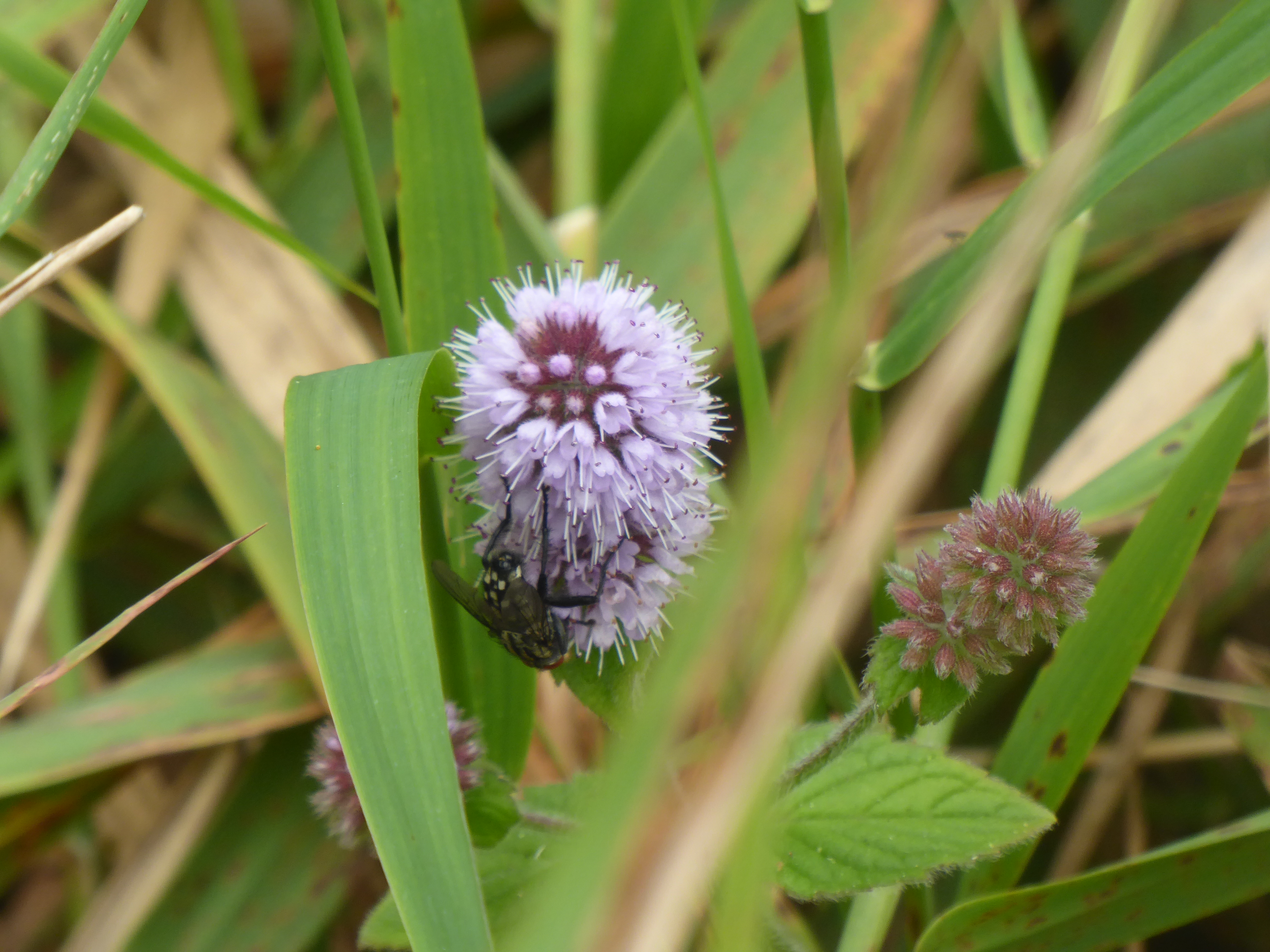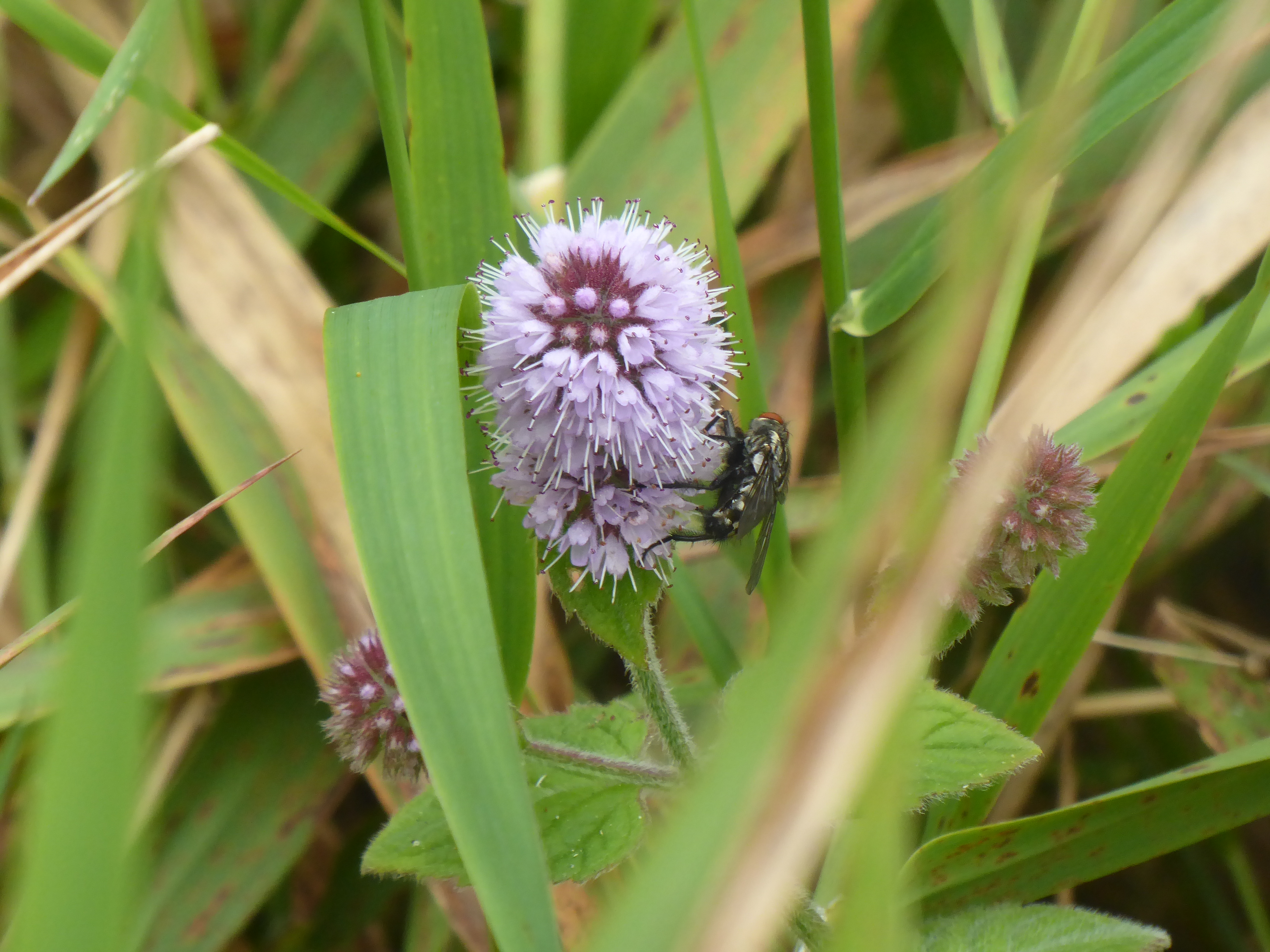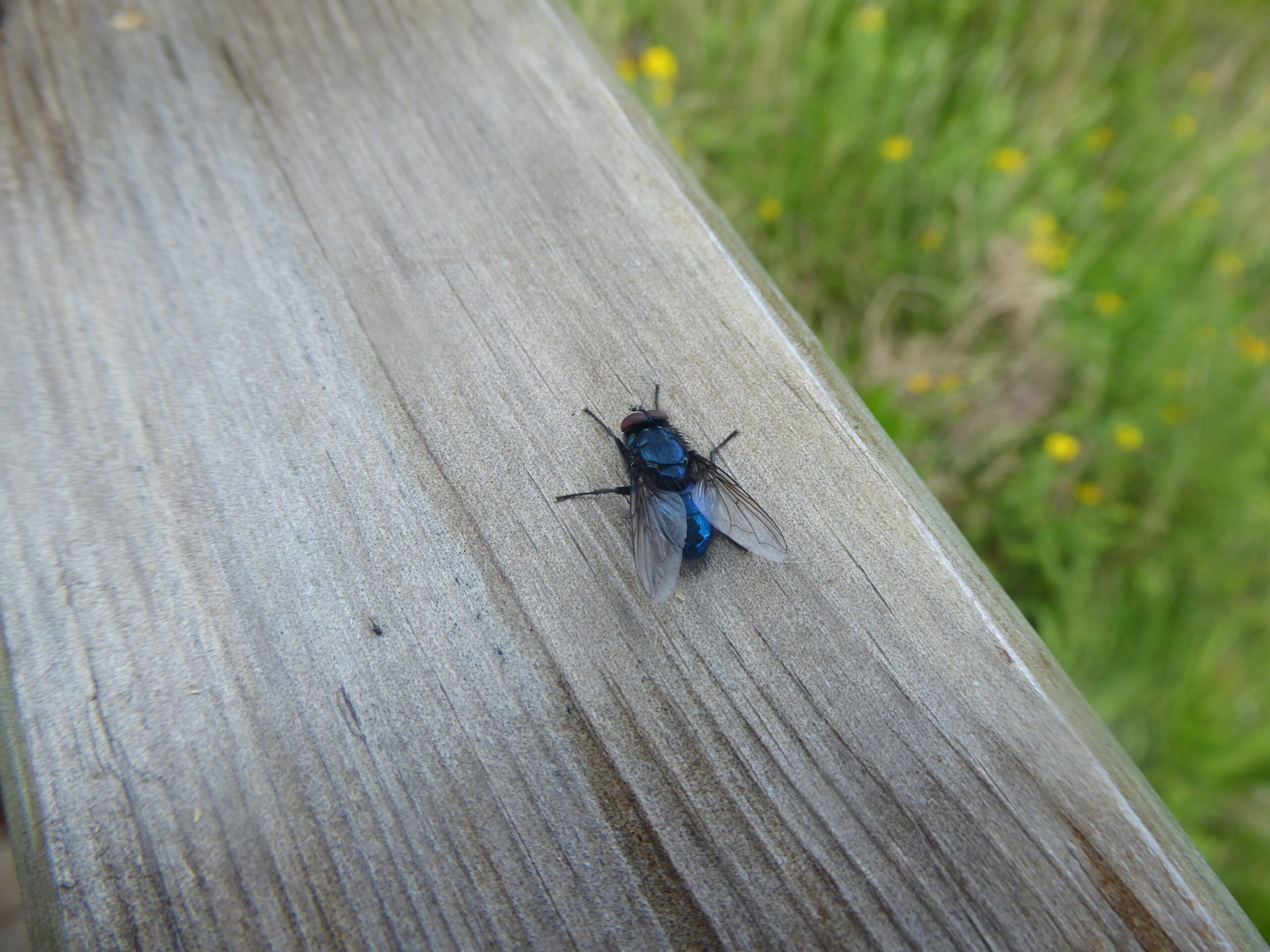I had already seen a green bottle and had been expecting to see the blue bottle first. But, really, what’s the difference between them?
Size – the blue bottle flies are larger than the green.
Colour – metallic blue vs metallic green.
Breeding – both lay their eggs on dead and decaying animals, the eggs hatch in less than a day and burrow deep into their food supply. They are important in breaking down the carcases of dead animals, but cause contamination issues if they get into food production areas. Whilst green bottles have the same breeding habits, they are considered less of a nuisance as they are less likely to come indoors and are reliant on warmer weather.
Uses – Green bottles will also invade living tissue, which is bad for sheep, when they burrow through dirty wool, but good for humans where they are used in medicine to remove infected tissue to speed up healing.


Flesh fly – I think this black and white checked fly is quite attractive in a tweedy sort of way. It’s a fly I have seen around, but not really thought about. It’s not as iconic as the blue bottle, or as unexpectedly striking as the green bottle.
So how does this differ from the ‘bottles’? Well, mainly because rather than lay eggs in their food source, it deposits the first instar larvae (maggots) directly onto carrion, compost, excrement etc. The larvae prefer moist conditions but can be found in urban or rural environments. However, they are an outdoor species, so are not thought of as a nuisance. Also, note, they are omnivorous, so will eat up their veg, as well as meat.
